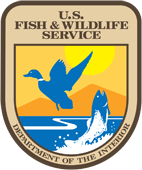Explore Bowhunting: National Implementation
Strategic Priority
Recruitment, Retention, Reactivation (R3) - Engaging Participants
Project Documents
Project Description
To nationally implement an innovative program that will give kids exposed to archery an opportunity to get into bowhunting. Explore Bowhunting is a unit-based curriculum that exposes students ages 11-17 to the primary sensory, technical, biological, and strategic skills of bowhunting. State agencies will implement the program in schools and parks and recreation programs to educate and recruit young people into the outdoors.
- To expand the Explore Bowhunting program nationwide by offering assistance to state wildlife agencies to implement the program in conjunction with introductory archery and hunter education programs.
- To build partnerships with non-governmental organizations and the archery and bowhunting industry to help financially support agency implementation efforts.
- To build on Explore Bowhunting’s capabilities as a recruitment tool and the next step from introductory archery programs such as NASP.
- Gather information through instructor and student surveys on the impact of Explore Bowhunting.
Project Facts
- Organization Name: Archery Trade Association
- Organization Status: NGO classified as 501(c)(6)
- State: Maryland
- Obligation: $200,000
- Start Date: 01-01-2013
- End Date: 03-15-2016
Results
At the beginning of this grant period, "Explore Bowhunting" was implemented in 1 0 states: Arizona, Alabama, Georgia, Kentucky, Michigan, Missouri, Nebraska, Oklahoma, and Virginia. In 2013 the ATA launched the program with six more states: Alaska, Florida, New Hampshire, Pennsylvania, Texas, and Wisconsin. Furthermore, the ATA is currently working with Iowa, Montana, New York, Ohio, Oregon, and South Dakota to plan statewide implementation in 2014.
To implement the program, a state must submit a program proposal outlining its implementation plan, primary audience, and evaluation methods. The ATA offers support and guidance in determining the best route for their agency. We recommend putting "Explore Bowhunting" where archery programs already exist and
a support network would easily be found.
All states implementing the program must customize the Curriculum Book and Student Handbooks with state Hunter Education information, overall program and contact information, and Where to Hunt information. These components are critical to educators leading youth down the recruitment pathway.
Each state implements the program differently. For example, Oklahoma and Texas implement the program in schools in conjunction with their archery school program and hunter education. Oklahoma has archery (NASP), "Explore Bowhunting," and Hunter Education in 160 schools, on average exposing 13,000 students annually to all
three programs. Texas currently has "Explore Bowhunting" in 40 schools, exposing 6,000 students to all three programs in the first year of implementation.
Similarly, Alabama focuses its efforts on Future Farmers of America (FFA) and Vocational Agricultural (Vo-Ag) teachers who find it very beneficial and a natural fit with their programs along with Hunter Education.
In contrast, Florida puts the program into their conservation centers and works within their community to implement it best for that particular population.
To launch the program in each state, the ATA provides a Teacher~WorkShop to help educators become familiar with the program, receive materials, and train state personnel in conducting the workshop. These workshops have proven invaluable to educators and state agency program coordinators.
The "Explore Bowhunting" program has written teaching materials, demonstration equipment kits, teaching trunks, and student handbooks. States are implementing "Explore Bowhunting" by placing permanent programs in schools, park and recreation facilities, or a combination of permanent programs and loaner kits.
The biggest roadblock since implementation in 2010 has been staff turnover in state agencies, lack of personnel (not enough staff to accommodate the demand for programs), and new program approval processes within state agencies. These roadblocks are only slowing down the program's implementation, not stopping its growth of the program. In states where Explore Bowhunting is established, it continues to grow.
The final report will detail feedback from state coordinators on the value of "Explore Bowhunting" as a recruitment tool and suggestions for implementation.
Total instructors trail}ed 2,697, and over 100,000 students participated in Explore Bowhunting.


